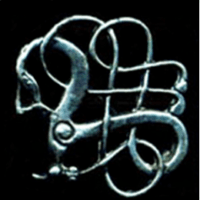The first thing most people picture when they think of Greenland is unlikely to be lush green pastures and grazing sheep, but the UNESCO Kujataa area in south Greenland has a rich heritage of sheep farming that began over a thousand years ago with the Norse and continues with Inuit farming communities today. Greenland RESPONSE is a short documentary film which explores this farming heritage through the lens of archaeology, following an international team of researchers racing to excavate organic remains from Norse sites rapidly degrading due to rising global temperatures.
I joined the team relatively last minute – in May 2022 I had a phone call with lead archaeologist Konrad Smiarowski and a month later in June I arrived in Narsarsuaq with my camera gear and instructions on how to find my way to the harbour in Igaliku where the team would pick me up and take me back to camp in Vatnahverfi. Two boat journeys, a short hike and an ATV ride later and I arrived at Qorlortukasik – better known as ‘Andala’s farm’ – where the rest of the team had been set up for a week already. That first summer was spent getting to know the team and familiarising myself with the archaeology. I often find it hard to describe what I do in a single job title because working in science communication means I need to be a ‘jack of all trades’ to some extent. It is perhaps simplest to start at the beginning – I studied archaeology at university and from there specialised as a reconstruction artist and illustrator which has seen me working with animation, 3D modelling, interaction design, painting, drawing – and now filmmaking. Having this background in archaeology helps me quickly embed into projects and, particularly when I’m working on architectural reconstructions, being able to jump in and dig with the team is an invaluable part of the process.



For archaeologist Michael Nielsen these connections to place are especially meaningful. Michael is a Greenlander and grew up in the town of Narsaq, one fjord over from where we are working now. Over the course of the project the two of us formed an effective team not just because he was able to lead the interviews in his first language of Kalaallisut, but his knowledge of the character and identity of the region helped to define the story we wanted to tell. Michael also seems to know absolutely everybody in south Greenland and it’s impossible to go anywhere without stopping to chat – an ideal situation for a filmmaker arriving to south Greenland for the first time and getting a feel for the place and people.

The changing climate and increasingly uncharacteristically unpredictable weather is a topic the locals bring up frequently also. I rejoined the team in the field again in 2023 to wrap up filming and help with some excavation. Rising global temperatures compounded by a strong El Niño phase that year made for an especially dry summer in the inner fjords. The farmers were worried about their fodder crops for the coming winter, while the archaeologists were being toasted alive in the field. I messaged the crew to see if I could pick up anything from town on my way in and received a one-word response – “suncream!”.
Working in archaeology might not seem like an obvious place from which to contribute to narratives around climate change, but in certain circumstances it can present a unique perspective on how people adapted (or not) to changes in the past. In some ways it is an opportunity to consider what it means to be resilient when we are faced with an uncertain future. What we can be certain of is that in the coming years the urgency to excavate these increasingly fragile sites and rescue what remains is only going to increase.
The film is an outcome of the NSF grant “Coproduction of knowledge and the building of local archaeological capacity in Greenland” by Hunter College CUNY with principal investigators Tom McGovern (IHOPE SSC), Jette Arneborg, Konrad Smiarowski, Christian Koch Madsen, and Ian Simpson. The project was funded by the National Science Foundation with support from the Greenland National Museum, UNESCO Bridges, NABO and the University of Iceland.





